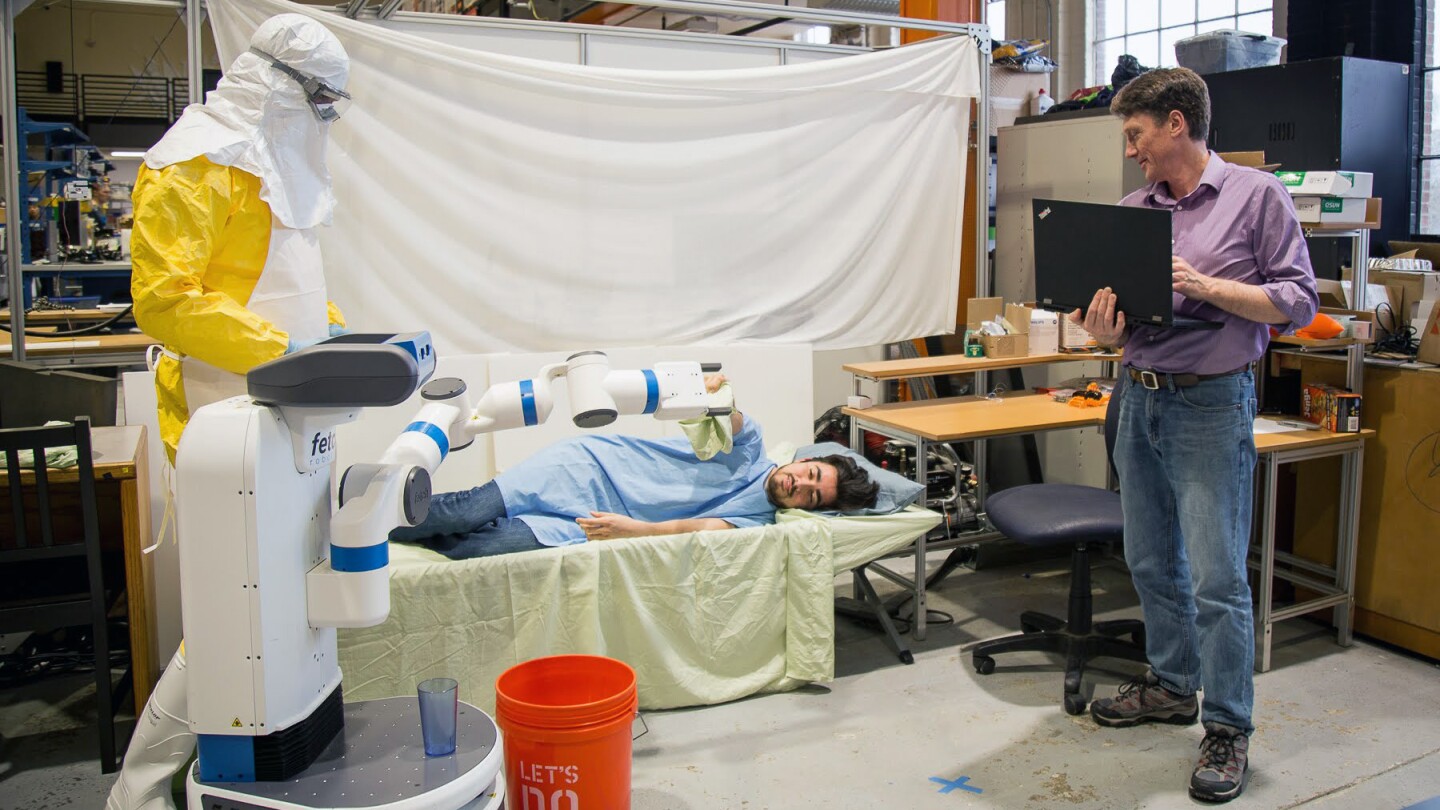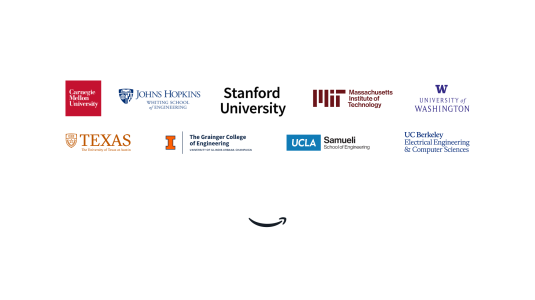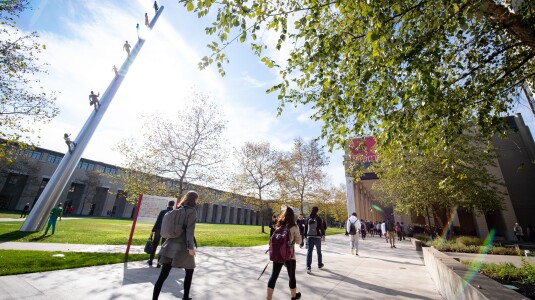Mobile robots are popping up all around us. They check inventory while rolling down supermarket aisles, clean airport floors at night, supply and sanitize hospital rooms, and check petrochemical pipes for corrosion. Amazon uses more than 200,000 robots in its operations.
People and robots are increasingly learning to live and work together. Bill Smart wants to simplify the interactions between them. Smart, a professor of robotics and associate director of the Collaborative Robotics and Intelligent Systems Institute at Oregon State University, is teaming with Amazon to study how robots and people interact over prolonged periods of time.
Working with robots at Amazon, it’s possible to think on a larger scale for months and years at a time. This lets you ask questions that you just can’t as an academic.
In academia, a typical study might include 30 people. Researchers bring the participants into a room, one at a time, where they interact with a robot in a variety of ways. This may yield some insights, Smart said, but these studies take place in isolation — just one person and one robot the person has never seen before. This scenario does not really duplicate the emerging robot-people world.
“As an academic, I can run a few robots for a few days, and do what essentially amounts to proof-of-concept studies,” he said. “Working with robots at Amazon, it’s possible to think on a larger scale for months and years at a time. This lets you ask questions that you just can’t as an academic.”
And that scale, over time, is extraordinarily valuable to Smart. "I want to know what these contacts look like over a month or over a year," Smart said. "Your interaction in that first hour is going to be a lot different than your interaction at the end of a month or a year. I'm interested in how people work with robots, and also what they do when they are not working with them, but sharing the same space."
The desire to run more robust experiments led Smart to Amazon, where he is an Amazon Scholar. He plans to study how people and robots interact with one another over the long term. Smart said his familiarity with Amazon Robotics, and the people who work there, also drove his interest.
“The thing that really got me to think about joining the Scholars’ program is the people that I knew who were already at Amazon,” he said. “I knew Tye Brady [Amazon Robotics’ chief technology officer] from MARS, and I’ve known Sidd [Siddhartha Srinivasa, director of Amazon Robotics] for years. The fact that Sidd, in particular, had moved to Amazon carried a lot of weight, and gave it a lot of credibility in the AI and robotics space.”
Smart is not just focused on people-robot interfaces. He also works on machine learning and public policy. He has a lot on his plate for someone whose career in robotics began while waiting for a date.
From math to robots
Smart grew up in Scotland, just south of the Highlands, in "a tiny little town of 7,000 people in the middle of nowhere." His father was a factory worker, his mother did piecework, and growing up, he spent his holidays picking fruit and working in a cannery.
If he had been a little older, he likely would never have furthered his education. Instead, educational reforms at the time enabled him to become the first of his family to go to university.
Smart started in mathematics at University of Dundee, but had a realization. "Math was very abstracted from reality," he recalled. "I could push the symbols around the page, but I didn't see how it affected the world. So I switched to computer science, which used some math, but I got to apply it to problems, which was really cool."
Smart thought his career path was set. Then, one night, he went to pick up the woman he was dating. She was not ready, so he started reading a magazine article about the robots that pioneering roboticist Rodney Brooks was building at MIT. That was all it took. “I looked at one and thought, ‘Wow. That's really cool,’” he said. He was hooked.
Nearby Edinburgh University offered one of the world's first master's degrees in robotics. That eventually led to a PhD in computer science at Brown University and a thesis on machine learning in robots. He set up his own lab at Washington University in St. Louis and later took a sabbatical year at Willow Garage, a California-based robotics incubator that was developing the open source Robot Operating System (ROS) at the time. In 2012, he decamped for Oregon State University.
Working together
Smart's research involves expanding on ways for people and robots to work together over the long term. One particular area he wants to expand on is the ways in which a robot signals what it is about to do and where it intends to go next.

“Currently, the robots we're working with have a set of indicator lights, similar to a car, that show the intent of the robot,” Smart observed. “The underlying safety systems on the robot will cause it to slow or stop. But the ultimate goal is to have the robots be ‘invisible in use’, so that the employees don’t have to think about them any more than they think about the actions of their human colleagues.”
One of the advantages of conducting this research at Amazon is scale. This is important for two reasons. First, it enables Smart to gather data on variations in robot behavior, like testing which side of an aisle a robot should use or how fast it should go.
"You can gather statistics on things you just could not learn in a smaller setting," he said. It also provides a more realistic framework for measuring those changes. Working at Amazon means Smart has access to the kind of scale that makes it easier to extrapolate useful results.
Large numbers also matter for machine learning. Smart's work involves turning sensor information into actionable intelligence. He views machine learning as a tool, and one that is highly effective. "That's really important in a production environment,” Smart said
Evolving robot policy
Smart, who was selected as an AAAS Leshner Leadership Institute Public Engagement Fellow in artificial intelligence, also has an interest in policy. While policy concerns stretch back over his career, his journey really began in 2011. That is when a colleague at Washington University, law professor Neil Richards, whose scholarship involves technology, suggested that Smart attend We Robot, then a new conference on the legal and policy aspects of robots and AI. Smart wound up giving the conference's first-ever presentation.
The conference was an eye-opener for Smart. It was begun by lawyers who were involved with internet law, which was written largely after the internet had already exploded into the world. The conference hoped to work through the legal implications of a world coinhabited by robots and people before those robots appeared on the scene. Smart was one of the few technologists there.
"Most of the scholarship came from the legal and policy side, and it was not strongly anchored to what the technology could actually do," he said. "They were talking about things that might become problems in decades and not things that were a problem today. This is because they misunderstood where the technology sits today."
There's still a lot of work to do, and the hard bit is where robots intersect with human activities. In five years, I think we'll still be trying to figure that out.
After interacting with roboticists for years, Smart found the conference exposed him to a different set of perspectives. He wanted to contribute by helping to explain robotics without the hype. The more people understand about robots, he said, the better decisions they will make.
Smart said he is also concerned about over-reliance on the idea that robots or AI can act as a panacea, rather than providing tools to address problems. Yet he remains excited. After 20 years in the field, he is finally seeing robots in the world. Even Oregon State has begun using delivery robots, doing useful jobs that make people's lives better.
"We're still in the early days, equivalent to where computers were before Apple and IBM," he said. "There's still a lot of work to do, and the hard bit is where robots intersect with human activities. In five years, I think we'll still be trying to figure that out."


















